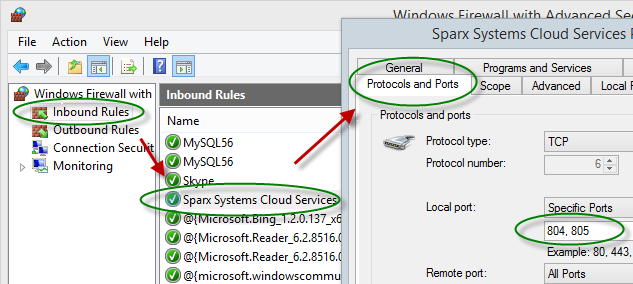Please note : This help page is not for the latest version of Enterprise Architect. The latest help can be found here.
Cloud Server Installation
The Sparx Systems Cloud Server runs as a Windows Service, accepting network connections from Enterprise Architect clients and sending the data required by the system back over the network. The service installer can be downloaded from the registered user section of the Sparx website:
http://www.sparxsystems.com.au/registered/index.html
Installing the service and editing configuration files will both require you to have Administration rights. To ensure that you are running as Administrator, right-click on the downloaded installer and select 'Run as Administrator'.
Cloud Server Components
Component |
Description |
|---|---|
|
Sparx Systems Cloud Service |
The Windows service that will accept connections from Enterprise Architect and the management client. Note: The only time you will not want this installed is when you are installing the IIS integration or management client on a different machine to the one running the service. |
|
Http Support |
Optional component for integration with IIS. Note: This is only required when using the advanced authentication method available through IIS; it can be installed on a different machine to the service itself. See the Cloud Server Using IIS topic. |
|
Management Client |
This is used for management tasks - including configuration of databases to connect to - and some server options. Note: This can be installed separate from the service itself, allowing many management tasks to be performed without logging directly into the server. |
Firewall Settings
When setting up a server, you do need to check that the Firewall on the server is set to allow the incoming ports for the database connections that you have created.
For example, in the default SSCloudServices.config the ports 804 and 805 are set as operative. If you have a firewall you must set these ports as enabled for inbound traffic.

See also the Windows documentation Open a Port in Windows Firewall.
Note: Another common cause of failure is that other services are already using the allocated ports. This is especially likely when using the default http (80) and https (443) ports.
Self-Signed Certificate using OpenSSL
In order to use a secure connection to your model, a server certificate is required. For a production environment, particularly one providing access to external users, you should obtain a certificate from an appropriate certificate authority. However, to help with initial setup and testing purposes these instructions are included for generating your own certificate.
This is a simple batch file that assumes that openssl is available on the windows path and is appropriately configured. If you paste this code into a batch file and run it with the target hostname as a parameter, it will generate an appropriate key file, which can then be placed in the service install directory.
echo off
if not "%1" == "" goto generate
echo ERROR: No target specified
echo USAGE: %0 url
echo EXAMPLE %0 localhost
goto end
:generate
echo on
openssl genrsa -out %1.key 2048
openssl req -new -x509 -key %1.key -out %1.cert -days 3650 -subj /CN=%1
copy /b %1.cert+%1.key server.pem
:end









